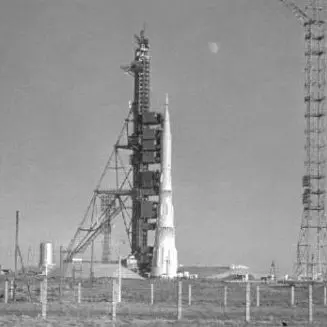7K-LOK n°2 & LK n°4
Launch Failure
Liftoff Time (GMT)
06:11:55
Thursday November 23, 1972
Watch Replay
Official Livestream
Mission Details
Launch Notes
At T+90 seconds, a programmed shutdown of the core propulsion system (the six center engines) was performed to reduce structural stress on the booster. Because of excessive dynamic loads caused by a hydraulic shock wave when the six engines were shut down abruptly, lines for feeding fuel and oxidizer to the core propulsion system burst and a fire started in the boattail of the booster; in addition, the #4 engine exploded. The first stage broke up starting at T+107 seconds and all telemetry data ceased at T+110 seconds.
LK n°4
The LK Model was a mass representative of the Soviet LK crewed lunar lander. The LK spacecraft can be subdivided into the lunar landing aggregate ("Lunnyi Posadochnyi Agregat", "LPA") and the lunar ascent vehicle, ("Lunnyi Vzletnyi Apparat", "LVA'"). Propulsion, both for landing and lifting off the Moon was based on the Blok E propulsion system. The Information Display System (spacecraft control panels and controls) version was called Luch.
Trans Lunar Injection
1 Payload
4,983 kilograms
7K-LOK n°2
The 7K-LOK n°2 was to perform a flyby of the Moon. Like the 7K-OK model, the 7K-LOK was divided into three sections, an ellipsoid Orbital Module, the "headlight"-shaped Descent Module, and a cylindrical equipment module. Like the 7K-OK, the 7K-LOK was capable of physically docking with another spacecraft, but lacked the transfer tunnel used on the Apollo (spacecraft), thus forcing the cosmonaut to make a spacewalk from the 7K-LOK's orbital module to the LK Lander using the new Krechet space suit (the predecessor to the Orlan space suits used today on the International Space Station). Another change to the 7K-LOK was the elimination of the solar panels used on the 7K-OK, replacing them with fuel cells similar to those found on the Apollo CSM. Another feature, a "cupola" located on the Orbital Module, allowed the cosmonaut in the 7K-LOK to perform the docking procedure with the LK Lander after lunar liftoff. Only the Descent Module from the 7K-L1, with a thicker, reinforced heatshield, is used on the 7K-LOK and like the 7K-L1, is capable of doing a "skip reentry" so that the Soyuz could be recovered in the Soviet Union. The information display systems (IDS) on the LOK were different from those of the Soyuz-7K. The Descent Module was equipped with the "Uran" control panel and the Orbital Module featured the "Orion" approach control panel.
Trans Lunar Injection
1 Payload
8,428 kilograms
Launch Site
Stats
N-1
4th
Mission
1st
Mission of 1972
OKB-1
710th
Mission
71st
Mission of 1972
1972
99th
Orbital launch attempt

